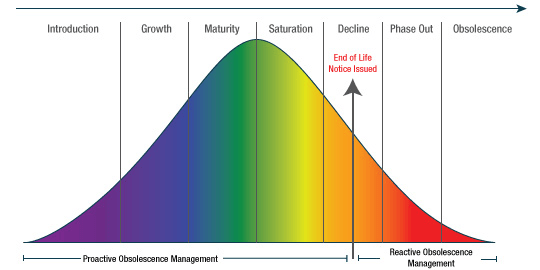General Purpose Diodes Information
General purpose diodes are two-terminal electronic components that allow current to flow in only one direction, from an anode (+) to a cathode. These simple semiconductors are PN junctions with a positive or P-region with positive ions and a negative or N-region with negative electrons. Applying a forward voltage to the PN junction causes current to flow in only one direction as electrons from the N-region fill “holes” in the P-region. The diodes reverse voltage is the potential barrier that prevents current to flow in the opposite direction, analogous to a pressure rating on a check valve.
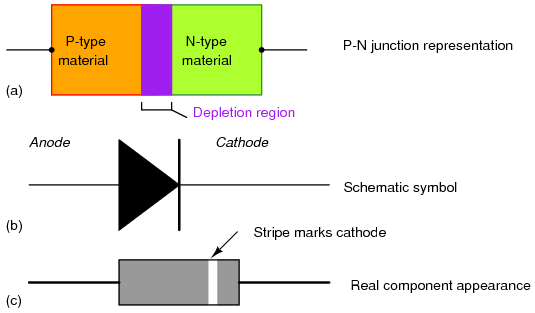
Image Credit: All About Circuits
Diode Characteristics
The characteristic behavior of a diode lies in its response to an applied voltage. The voltage drop is a measure of energy lost across the junction of the diode. This is represented by a forward voltage (VF). When the applied forward bias voltage is greater than this value the current increases exponentially. The load that the diode can carry is represented by a forward current (IF). Below the forward voltage there is an insignificant current across the junction. The reverse voltage (VR) is blocked and the voltage required to cause a significant increase in current beyond the reverse current (IR), also known as leakage current, to exist is a potential several times larger than the forward voltage, known as the breakdown voltage (VBR). This behavior allows the junction to exhibit two states, ON when the potential is greater than the forward voltage and OFF when the potential is less than the forward voltage, so long as the reverse breakdown voltage is not exceeded.
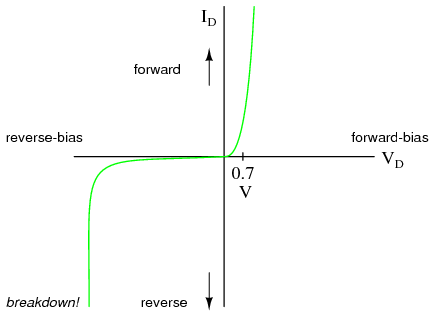
Image Credit: All About Circuits
-
Forward voltage (VF) is the voltage across the diode terminals resulting in a sharp increase of current in the forward direction.
-
Forward Current (IF) is the current when the forward voltage is applied; it flows through the diode in the direction of lower resistance.
-
Reverse current (IR) or leakage current, is the current value when the reverse voltage is applied and measures the current that flows when reverse bias is applied to a semiconductor junction.
-
Reverse voltage (VR) is the maximum allowable reverse voltage that can be applied repeatedly.
-
Breakdown voltage (VBR) is the reverse voltage at which a small increase in voltage results in a sharp rise of reverse current.
-
Junction operating temperature (Tj) is the range of temperatures at which diode is designed to operate.
Materials
General purpose diodes, also known as PN junction diodes, are composed of a crystalline semiconductor that is doped with N-type and P-type impurities. The semiconductor, crystalline lattice, is composed of materials such as silicon, germanium, or selenium. The N-type impurities and P-type impurities are doping agents used to create two junctions, a cathode and an anode with a depletion region between the two.
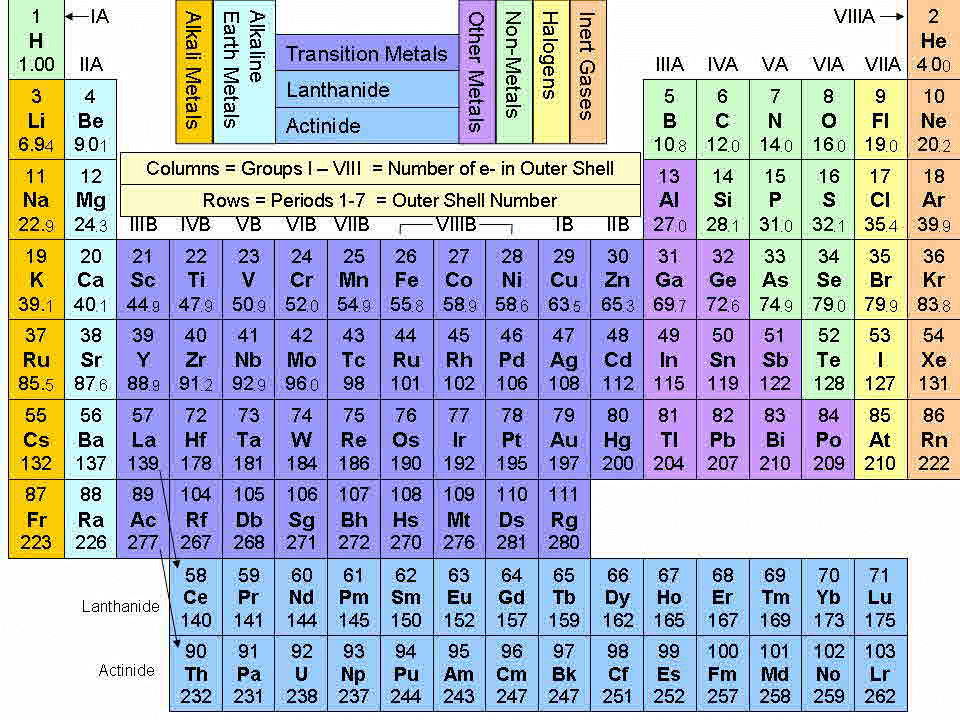
Image Credit: Homework-Help_Secrets.com
Silicon (Si) is the most commonly used semiconductor material today. It is a metalloid element with intrinsic semiconducting properties and is a semi-insulator in its un-doped pure form.
Germanium (Ge) has many of the same properties as silicon with the same number of valance electrons as they are both in group IVA of the periodic table. Its use in the semiconductor industry has diminished due to cost and availability as its replacement, pure silicon (Si), is more abundant and economical. 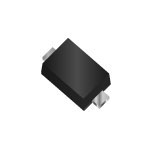
Selenium (Se) is a semiconductor in group VIA of the periodic table. It is produced as a byproduct of metal sulfide ores, as it exists as an impurity in replacement of sulfur. Selenium, like germanium (Ge), has been replaced by silicon (Si) as it exhibits a higher voltage drop and is less efficient in most diode applications.
Doping
Semiconductor doping, the addition of a very small amount of a foreign substance to a pure semiconductor crystal, provides a semiconductor with an excess of conducting electrons or an excess of conducting holes. Semiconductors are either doped with N-type or P-type impurities. N-type semiconductors, carry a negative charge as the dopant donates free electrons to the substrate. N type impurities are group VA atoms on the periodic table such as phosphorous (P). P-type semiconductors are positively charged as the covalent bond with P-type impurities is missing an electron. P-type impurities are group IIIA elements on the periodic table such as Boron (B).
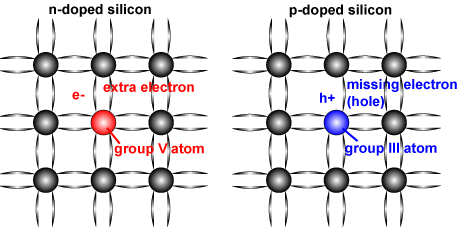
Image Credit: ASDN
Applications
General purpose diodes are often used in any application that does not require a specialized function or power requirements. Some of the applications include:
• Voltage regulators
• Switching applications
• Clamping circuits
• Power supplies
• DC-DC converters
• AC-DC converters
• DC-AC inverters
• Signal rectifiers
• Oscillators
• Signal modulators / demodulators
• Cellular phones
• TV chassis
• Camcorders
• Motherboards
Product Lifecycle Stages
General purpose diodes follow product lifecycle stages that are defined by the Electronic Industries Alliance (EIA) in EIA-724. Numbered stages range from zero to eight and cover product introduction, growth, maturity, market saturation, market decline, phase out, last shipment, and removal. The first stage, Life Cycle Stage Code 0, describes rectifier diodes that are in the planning or early design stages. The last stage, Life Cycle Stage Code 8, describes rectifier diodes that are no longer stocked in inventory or available for sale.
Image Credit: IHS
RoHS / WEEE Compliance
RoHS Compliant
Image Credit: Industrial Safety Solutions
Restriction of Hazardous Substances (RoHS) is a European Union (EU) directive that requires all manufacturers of electronic and electrical equipment sold in Europe to demonstrate that their products contain only minimal levels of the following hazardous substances: lead, mercury, cadmium, hexavalent chromium, polybrominated biphenyl and polybrominated diphenyl ether. RoHS became effective on July 1, 2006.
WEEE Compliant
Image Credit: EPM Global Services
Waste Electrical and Electronics Equipment (WEEE) is a European Union (EU) directive designed to encourage the reuse, recycling and recovery of electrical and electronic equipment. WEEE is also designed to improve the environmental impact and performance of this equipment. The WEEE directive establishes requirements and criteria for the collection, treatment, recycling and recovery of electrical and electronic equipment. It also makes producers responsible for financing these activities. Retailers and distributors must provide a way for consumers to return used or obsolete equipment without charge.
Resources:
Introduction to Diodes and Rectifiers
Image Credit: ROHM Semiconductor, USA LLC
